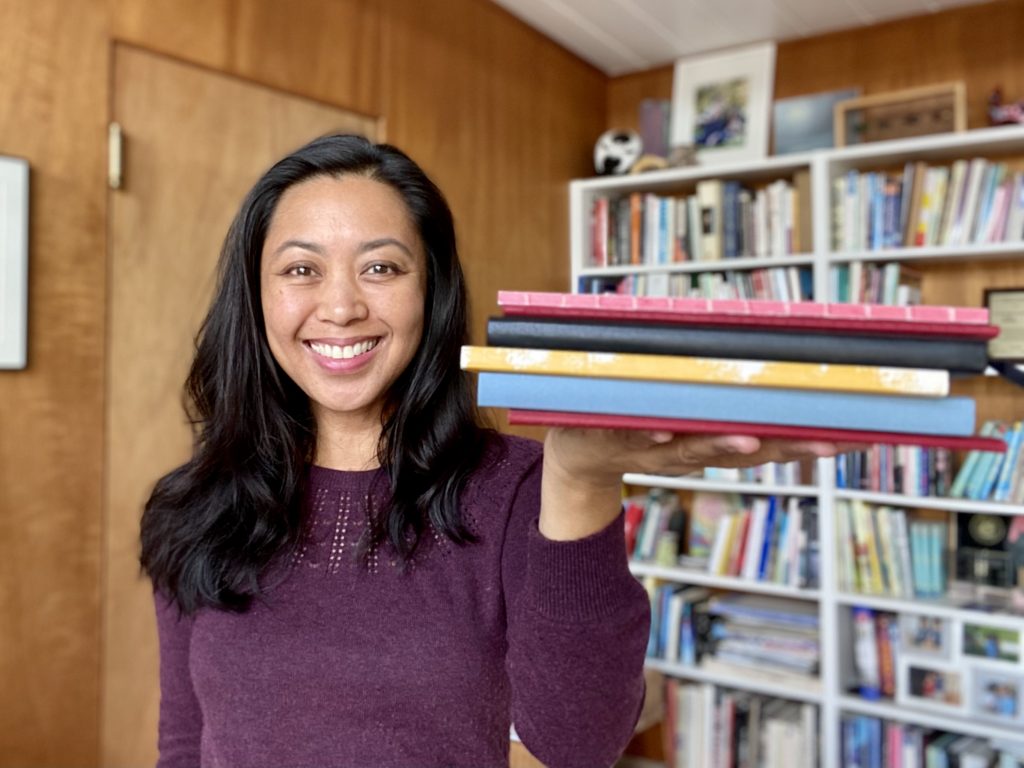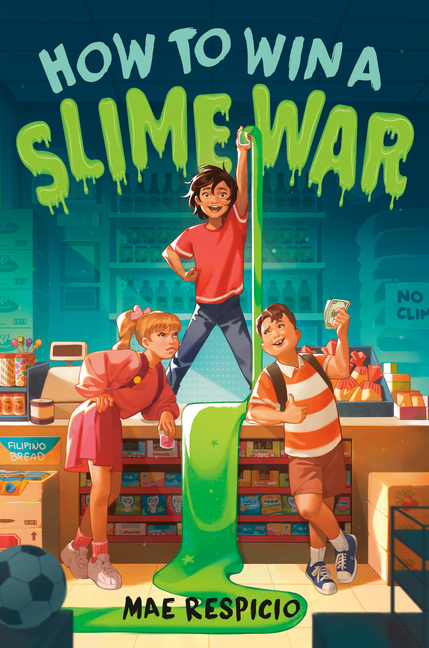From Teaching to Writing

TeachingBooks asks each author or illustrator to reflect on their journey from teaching to writing. Enjoy the following from Mae Respicio.
How digging deep has fueled both my teaching and writing
My mom, a retired elementary school teacher, is the first person who got me writing in a journal; I was in the third grade, and she made me keep one to check my spelling! I hated journaling at first but by middle school, I was writing in a diary all the time. Even now, I still fill empty pages with reflections around the big and small moments of my life, which has always helped me to thoughtfully process my experiences. I’ve also learned that reflective writing can be a meaningful tool when facing the terrifying blank page—so much so that I use it both when I’m writing novels and teaching creative writing to kids and teens.
For me, novels that resonate the most are those that go beyond plot, beyond simply being a series of events.”
Think about the books that have stayed with you. What is it about them that made you think and feel? For me, novels that resonate the most are those that go beyond plot, beyond simply being a series of events. The books I think about for days (sometimes months, years!) after I’ve read them, are those where the plot has a strong emotional push. Finding that emotional connection when drafting a story can often be sparked through reflective writing—what I think of as “digging deep.”

In the first novel I ever attempted to craft, the beginning and ending came easily, but I was stuck trying to get through that messy middle. At the advice of a writing mentor, I started doing quick, timed writing warm-ups before sitting down to my blank notebook and tea. I automatically turned to reflective questions as prompts. My memories and everyday life soon became a catalyst to fictional characters and worlds, and that’s when the words finally flowed. The emotions from my own experiences are what helped me to find my story’s heart.
A similar thing happened with students when I taught through a program called PEN in the Classroom. Their culminating project was a long story, and I remember our first session very clearly. A few kids jumped right in, but most were immediately intimidated by the blank page. We tried different creative exercises as warm-up but what ended up working the best for their creative juices was when I finally brought in blank journals. They explored prompts like:
- Write about the happiest day of your life.
- What makes a good friend?
- What surprises you?
- How was your day? What did you love or hate about it?
- Describe your favorite kind of celebration.
- Describe yourself in thirty words or less.
- Where is your favorite place to spend time?
- What’s the scariest dream you’ve ever had?
- Write a letter to yourself ten, twenty, thirty years from now.
- If you could have any special talent in the whole world, what would it be?
Looking inward gave them real and familiar emotions to play with and helped them to unlock all kinds of ideas, characters, and inspiration.
After building this into their writing practice, the students’ curiosities were turbo-charged! Looking inward gave them real and familiar emotions to play with and helped them to unlock all kinds of ideas, characters, and inspiration. It was the brain food they needed to ignite their stories and bring them to a richer, more nuanced place.
Digging deep is how I stay grounded in my writing life, and I’ve observed that when students are given the chance to explore their own actions, reactions, and choices in the same way, it’s when empathy on the page—and for themselves as writers—begins to happen. And we all know that the best books are those that help us step into others’ shoes to learn more about ourselves and the world around us.
So, if you’re ever in need of inspiration in your teaching or creative life, grab a blank journal with your students, and give reflective writing a go! You may find it’s just the spark you’ve been looking for.
Books and Resources

TeachingBooks personalizes connections to books and authors. Enjoy the following on Mae Respicio and the books she’s created.
Listen to Mae Respicio talking with TeachingBooks about the backstory for writing How to Win a Slime War. You can click the player below or experience the recording on TeachingBooks, where you can read along as you listen, and also translate the text to another language.
- Listen to Mae Respicio talk about her name
- Watch a Video Book Trailer for How to Win a Slime War
- Discover Mae Respicio’s page and books on TeachingBooks
- Visit Mae Respicio on her website, Twitter, Instagram, and YouTube.
Explore all of the For Teachers, By Teachers blog posts.
Special thanks to Mae Respicio, Blue Slip Media, and Penguin for their support of this post. All text and images are courtesy of Mae Respicio and Penguin, and may not be used without expressed written consent.



Leave a Reply